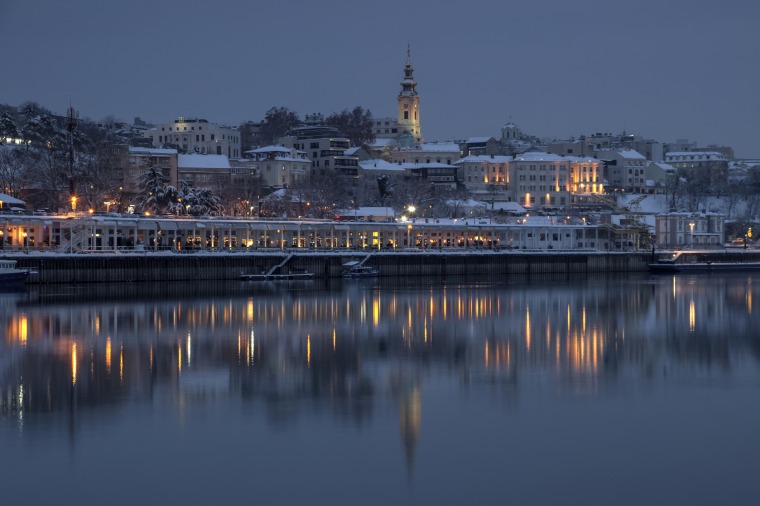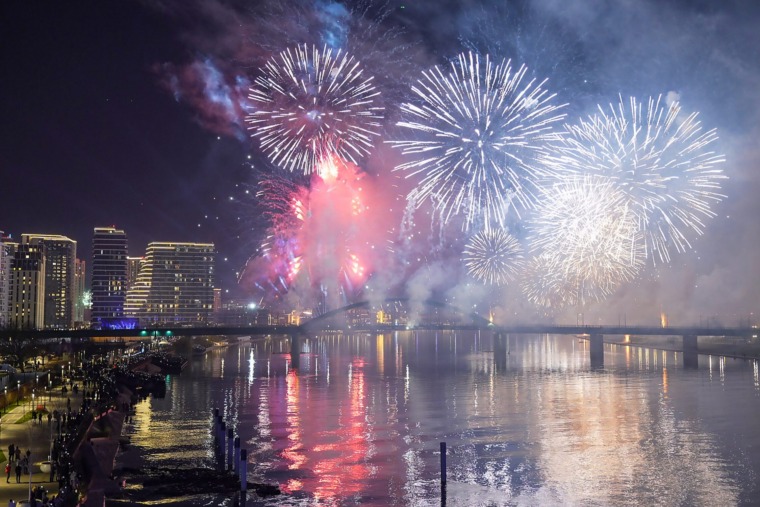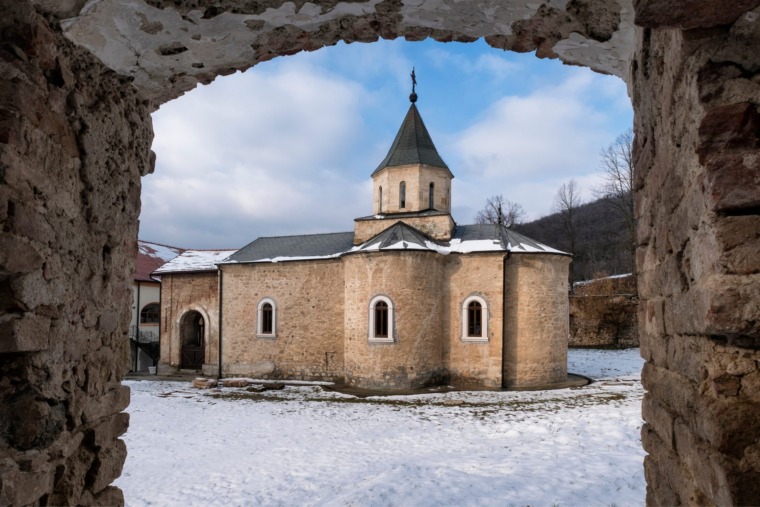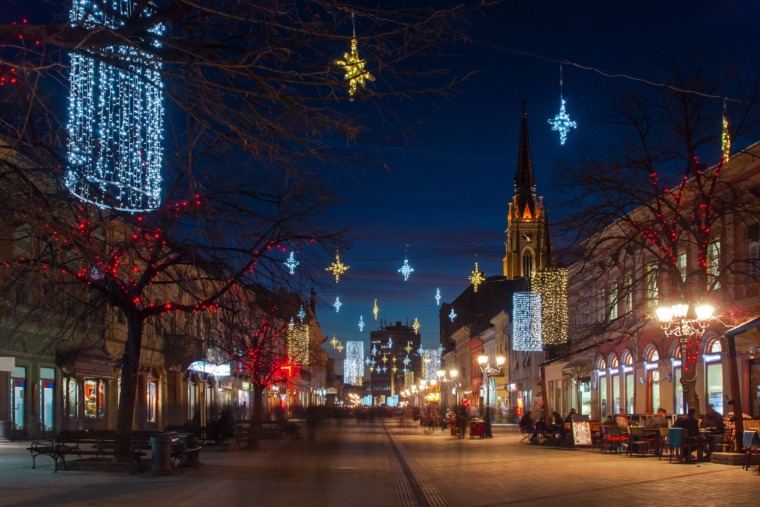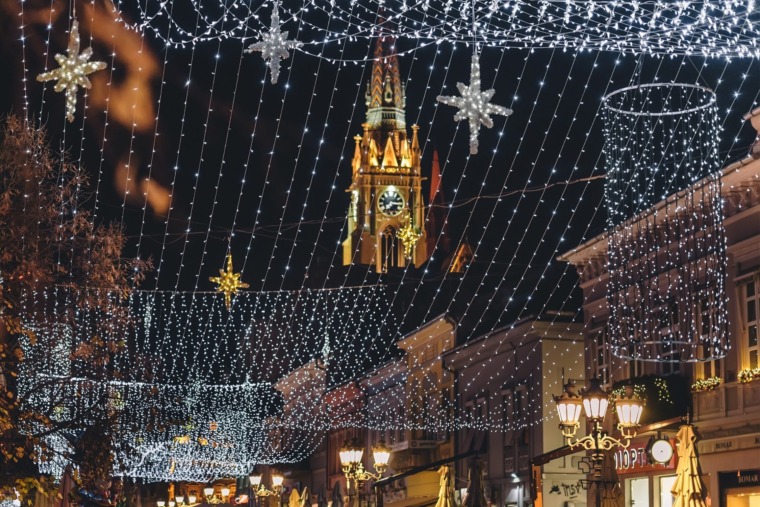

Dvorska (Court) Street in Vršac was named after the Bishop’s Court (Vladičanski dvor), which is located at number 20 and surrounded by a park encircled by a French Baroque fence. The palace was built in 1762 at the time of Bishop Jovan Georgijević. The bishop obtained a building permit from the court of Austrian Empress Maria Theresa and the structure was meant to be the residence of the Bishops of Banat, which it has remained to this day.
The palace has been restored several times, most recently in 1904, when its façade was remodelled in a richer Neo-Renaissance and Neo-Baroque style. The court’s extraordinary treasure is its chapel, dedicated to the Holy Archangels Michael and Gabriel and built in the 18th century with a beautiful baroque iconostasis. The iconostasis is atypical, made of hard material – as opposed to the usual practice of iconostases made of carved wood. This iconostasis was painted by Nikola Nešković from Vršac, grandfather of Jovan Sterija Popović. He was sent by Bishop Georgijević to the academy in Kiev and upon his return to Vršac he painted the iconostasis of the court chapels. The part of the iconostasis above the left and right doors is interesting and rare – showing the painted genealogy of Jesus Christ, through the Old Testament, according to the Gospel. From Abraham to King David, 14 knees, from King David to Babel, 14 knees, and from Babel to Jesus Christ, 14 knees. At the top of the iconostasis and the foot of the cross are painted bones, a paraphrase of Golgotha or, translated, the bone hill, above is the crucifix and at the top there is the resurrection, as the essence of Christianity – a victory over death.
In the chapel rests the miraculous icon of the Holy Mother Virgin, called Vinčanska or Bezdinska, according to the names of the monasteries where it was held. It is known that in the 18th century this icon came from one of the Kiev monasteries; that it was held in several monasteries and that since 1931 it has been in the Bishop’s Court. It is assumed to have been painted in the period between the 15th and 16th centuries.
The chapel is authentic, with a few minor interventions mainly due to the moisture that was collected in the lower part of the iconostasis. Only the royal doors are a replica of the original, which is preserved. The chapel is exposed to the canonical icon of Saint Theodore of Vršac and in the Bishop’s chapel there is a painting, Heavenly Jerusalem, by an unknown painter, in the spirit of the Levant Baroque.
The court also preserves a collection of portraits of church dignitaries, icons, old books and religious vessels. A total of 292 icons dating from the 18th and 19th centuries are stored in the court treasury. The collection includes works of Šerban Popović, Teodor Ilić Češljar, Konstantin Pantelić, Nedeljko Popović, Nikola Nešković and other famous painters. This valuable collection has been processed in a catalogue by the Institute for the Protection of Cultural Monuments and Matica Srpska from Novi Sad.
COURT AS A MUSEUM
The entire Bishop’s residence is also a kind of exhibition area, with rare and valuable works of art from the 18th and 19th centuries. The first portrait of the Bishop of Vršac was painted in 1763 in the Baroque style. It was a work of Viennese painter Johan Michel Vaagner. It is a life-size image of Bishop Jovan Georgijević (Djordjević).

It is extremely representative and the bishop’s office contains 14 portraits of Vršac, Banat and other bishops of the Serbian Orthodox Church. The Gallery of portraits of Bishops of Banat is located in the lobby of the Court, while the small dining room holds icons on canvas of St. Nicholas, St. George, Holy Healers and St. Demetrius – the work of Uroš Predić.
Court furniture belongs to the most representative pieces of period furniture and set furniture. Mostly in the spirit of the Baroque and Biedermeier styles, this furniture is in perfect harmony with the interior. The Court Library has several thousand books and archival materials.
Vršac and Banat bishops had their own chapel painters, many of whom were often precious advisors and friends. This collaboration of artists and bishops turned the Bishop’s Court into a museum, whose treasure is available to the public, to our great delight.
By Dragana MARKOVIĆ
Photos by Dragan Bosnić and courtesy of the archives of the Bishop’s Court
Related Articles


What to Do with Kids in Serbia: Family-Friendly Holiday Ideas
December 14, 2025
Winter Wine Escape: Serbia’s Most Beautiful Holiday Wineries
December 11, 2025